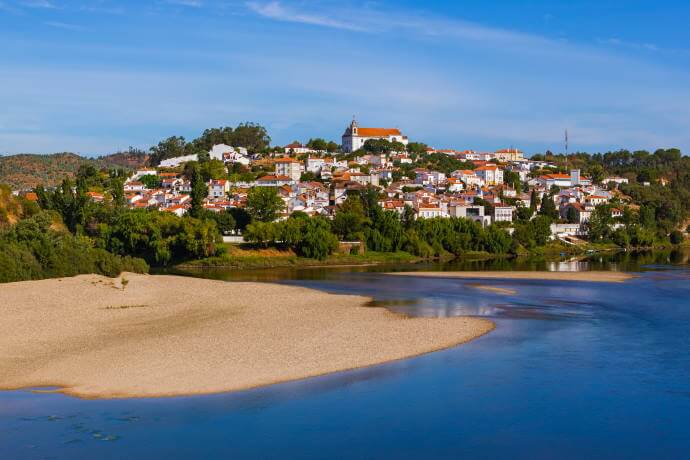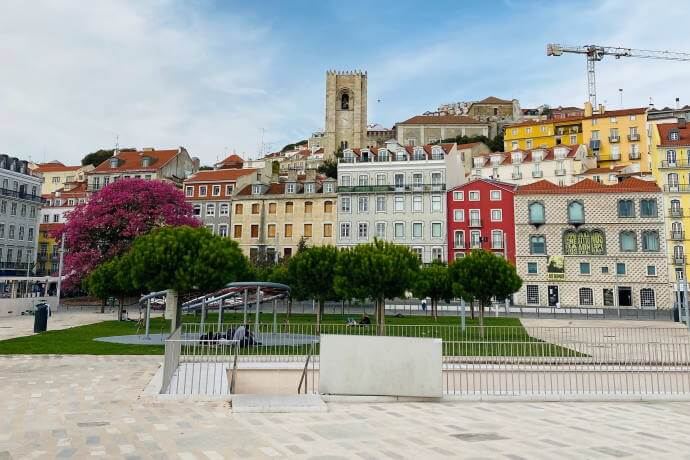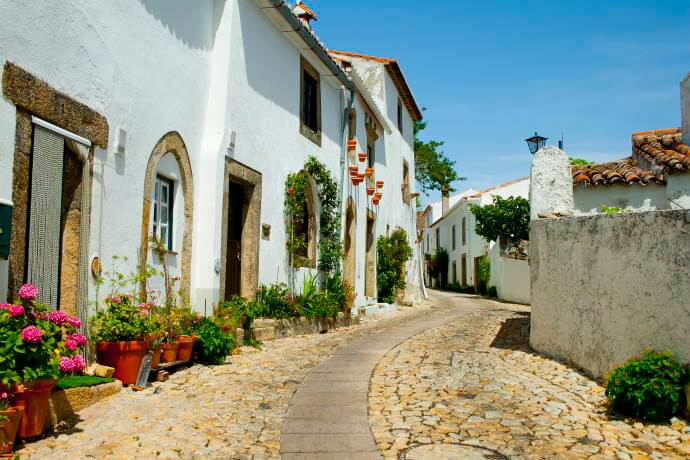A person becomes a traveler a long time before the start of the journey. The desire to know, the need to move and to dig deeper come from the soul instead of from the feet. Saramago’s journey to Portugal was his own and already in the preface of the book you are warned to “make of this book an example and not a model”. Use Saramago's inspirational words to create and adorn your beautiful trip to Portugal with a touch of you which in the end, is what is going to make of it, a unique, once in a lifetime, memorable experience. Between October 1979 and July 1980, José Saramago travelled the length and breadth of the country which resulted in a travel book that is still revered as a poem of love, dedicated to his country – Portugal!
First, let us tell you about Saramago:

José Saramago was a Portuguese author who was born in 1922 in Portugal, died in 2010 in Spain. He was the only Portuguese writer to be laureate with the Nobel Prize for Literature. Saramago is a rare case of a self-made writer who earned a tremendous success after almost a lifetime of learning and working in many other trades including locksmith, mechanic, translator and book editor. After having written and published what he himself rated as an unsatisfactory first novel at the age of 25, Terra do Pecado,(Land of Sin), it seemed that Saramago’s stroke of inspiration was slow in coming. It took him over half of his life to reach the goal he aimed for: the perfection of the simplest things and of the most unassuming people and ways of living, that he had lived surrounded by until then. The admirable way that Saramago captured the spirit of the people of the region of Alentejo in the novel Levantado do Chão (Raised from the Ground) from 1980, will grant him worldwide recognition and eventually lead to a full-time career as writer and to winning the Nobel Prize in 1998. After the age of 58 Saramago starts an intense writing activity that will never cease until his dying day. The great “pillar” of his life, he recognized, was his wife Pilar, a Spanish journalist whom he marries in 1988 and with whom he moves to the island of Lanzarote, in Las Palmas, Spain in 1993 after many years of struggling against the lack of recognition by his peers in Portugal due to his bold use of grammar and approach to certain tabu themes. It is in the province of Tías in the island of Lanzarote in Spain that Saramago sees the last sights of this world, surrounded by mountains and a vast ocean, a land of contrasts quite fitting for the man who inhabited it.
What is so different about Saramago?

Saramago writes mostly about what he sees, using words as they come to him mostly relying on commas as to indicate pauses in his breathing as the narrator, achieving a level of purity and clarity in his written speech that it is almost as if you, as the reader, were traveling through his words. Traveling in time, traveling in space. Saramago takes you by the hand and makes you walk with him through the land of the ones who suffer, the ones who seem to be always on the wrong side of the barricades but at the same time allowing you the opportunity to revisit your own sentiments and reaching your personal conclusions. Some would say “salvation”. Saramago’s work is partly realistic, hard and nude but definitely aggrandizing and full of possibilities and novel scenarios. Sometimes you feel like you are in a foreign land while others, that you just came back home. That is Saramago and his genius. That is the way that he planned the journey to be: rocky, bumpy, but full of rewards.
Journey to Portugal (Viagem a Portugal)

Between October 1979 and July 1980, José Saramago travelled the length and breadth of the country at the invitation of the Círculo de Leitores a Publisher’s House, which was celebrating the tenth anniversary of its establishment in Portugal. The sponsored trip was intended as a descriptive portrait of Portugal and ended up as an immense poem of love under the disguise of a travel book, dedicated to his country.
In Journey to Portugal, Saramago's unique language materializes in such a heartfelt, recognizable way that it comes to mind that it seems like a work of fate - it's as if each location and its people have been waiting for their writer. A million travelers have seen the rivers, the hillsides, and the forests that Saramago has seen. They entered the same castles and churches. They asked for information from the shepherd, the spinner and the old man at the crossroads. All of them provided nourishment to what the eye could see and to what the mind could imagine.
In this book, we learn what things are called in Portugal, what food goes on the table and when, who painted the ceiling of that small chapel, when does it rain, what happened to the flowers on the almond trees that the Moorish king had planted for his Nordic princess, how slow the hours run in the streets of Alentejo, and so many other traits of character that are deeply embedded in the Portuguese soul and who help to explain the country and its people.
Following Saramago’s footsteps means you can do the same itinerary dividing the country in regions as he did and either follow his suggestions or choose your own favorites. The poetic names given by Saramago to each region only stir up the interest and curiosity to go and find out more. The North includes the Northeast and Northwest, the Rough and the Golden and the Low Lands, Neighbors To The Sea. The Center regions are called the Soft Stone Beiras, Patience and Between the Mondego and the Sado, Stopping, everywhere. Finally, the southern regions are called by the writer The Great and Blazing Land of Alentejo and From the Algarve and the Sun, Dry Bread and Soft Bread.
The author said after his wanderings, that "the end of a journey is only the beginning of another. It is necessary to see what has not been seen, to see again what has already been seen, to see in spring what was seen in summer, to see during the day what was seen at night... It is necessary to return to the steps that have been taken, to repeat them, and to trace new paths.”



